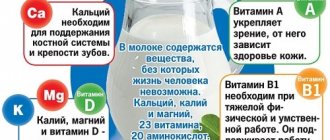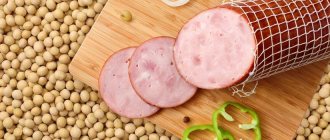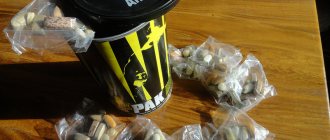Our distant ancestors also noticed that naturally dried fruits and berries acquire a brighter and richer taste. At the same time, they store well and are a nutritious delicacy that is convenient to take with you on long hikes. In ancient times, stocks of dried fruits served as an excellent alternative to fresh fruits in the off-season and were a real salvation in lean years.
Since those ancient times, dried plums, apricots, figs and dates have become the main sources of vitamins and beneficial micro- and macroelements. But do we know everything about dried fruits?
In this article we will talk in as much detail as possible about dried fruits, their beneficial properties for the body, composition and energy value. We’ll tell you how to choose the right quality product, and we’ll also tell you who is recommended to include dried fruits in their diet, and who should limit their consumption of this sweet delicacy. So, first things first.
General information about dried fruits
To prepare dried fruits, the ripest fruits and berries are used, from which most of the moisture is removed by drying (natural or using special dryers). The residual moisture content of the product is ideally 20-25%, due to which dried fruits acquire a dense and elastic structure, rich sweet taste and bright aroma.
When excess moisture evaporates, the concentration of microelements and fiber becomes higher than in “raw” fruits, while most of the vitamins are preserved.
The list of the most popular dried fruits in the world is traditionally topped by raisins, dried apricots, dates, prunes and figs. In the assortment of specialized stores you can also find dried pears, apples, persimmons, melons, and peaches. Exotic lovers can buy real delicacies: dried mulberries, bananas, pineapples, papaya, mango, passion fruit, kumquat.
All these dried and candied fruits are an excellent alternative to the usual sweets, since in addition to a large amount of sucrose they contain a whole range of vitamins and nutrients.
Video tips from nutritionists
Finally, I advise you to watch a video with recommendations from nutritionists regarding dried fruits:
Irina Polyanitsa My name is Irina, I am the owner and admin of the site, as well as the author of most of the recipes and articles. I love to cook simple and healthy delicacies. Certified gym instructor, personal trainer. She completed a course on nutrition and health at Stanford University, Stanford Introduction to Food and Health, as well as a course at Ludwig Maximilian University of Munich (LMU) Nutrition and Lifestyle in Pregnancy (about nutrition and lifestyle during pregnancy).
Useful properties of dried fruits
One small piece of dried fruit is no less beneficial for the body than fresh fruit. By comparison, one serving of the same dried apricots or raisins contains up to five times more vitamins, fiber and microelements than ripe fruits. It is enough to eat one handful of dried fruits and berries a day to replenish most of the recommended daily intake of nutrients.
Dried fruits are a unique combination of microelements that are indispensable when choosing the right diet. They contain dietary fiber and antioxidants necessary for the body, which slow down the aging process of cells. The high content of potassium and magnesium helps to withstand increased stress during sports and helps strengthen the nervous system.
For the most part, dried fruits have a positive effect on the immune and cardiovascular systems, contribute to the normalization of digestion and the functioning of the gastrointestinal tract.
Raisins are a valuable source of dietary fiber and antioxidants; they contain omega-3 fatty acids, vitamins B1, B6, C, potassium, calcium, magnesium, phosphorus, iron, and copper.
Phytonutrients (antioxidants) contained in raisins in sufficient quantities reduce the risk of developing cancer. Due to the content of oleanolic and linoleic acids, raisins have a pronounced antimicrobial effect, therefore they effectively fight harmful microorganisms in the mouth. Regular consumption of raisins slows down the development of caries and accelerates the process of remineralization of tooth enamel.
Dietary fiber, potassium, magnesium and manganese have a beneficial effect on the functioning of the heart, help strengthen blood vessels, and normalize blood pressure. Regular consumption of dried grapes can reduce blood sugar levels and ensure a stable course of type 2 diabetes.
Raisins are an indispensable product in the diet of athletes, as they increase endurance, improve physical strength and performance.
Dried apricots. Dried apricot fruits have a relatively low calorie content (no more than 250 calories per 100 grams of product), but at the same time they have a rich composition. High-quality dried apricots contain an impressive amount of vitamins A, B2, B5, E, PP, as well as potassium, calcium, phosphorus, silicon, iron, manganese, copper, magnesium, and dietary fiber.
Dried apricots are rich in essential antioxidants that neutralize free radicals, protecting the body from the development of cancer.
The presence of a large amount of fiber in dried apricots makes the product useful for proper nutrition, especially during diets. The dietary fiber contained in dried apricots increases many times in volume after entering the stomach, providing a feeling of fullness for a long time. Fiber improves digestion, prevents the development of obesity, and relieves constipation.
The presence of iron in dried apricots allows the product to be used to prevent anemia (a disease caused by iron deficiency). This is especially important for older people. Dried fruits also contain vitamin C, which facilitates the absorption of iron.
Vitamins A, B2, B5, E, PP, widely present in dried fruit, have an extremely positive effect on the functioning of the cardiovascular system.
Dates. Dried date palm fruits have no equal in the amount of amino acids and minerals. Copper, calcium, potassium, iron, fluorine, zinc, magnesium, manganese and other trace elements are presented in dates in enviable quantities. As well as vitamin C, vitamins A, E, B, D, polysaccharides and fiber.
Retinol (vitamin A) normalizes metabolism, participates in the formation of new cells, improves vision, and slows down the aging process. Vitamin E strengthens the immune system, controls blood sugar, has a tonic effect, increases endurance and performance.
Regular consumption of just 5-8 dates a day normalizes the gastrointestinal tract, improves liver function, strengthens hair and makes the skin more elastic.
Prunes. Dried plums contain an impressive amount of vitamin K, B2, B5, B6, E, PP, as well as phosphorus, potassium, calcium, silicon, chromium, zinc, iron, manganese, copper, magnesium. This is a valuable source of dietary fiber, which is simply necessary for normal intestinal function. The chlorogenic and non-chlorogenic acids contained in the product make it possible to use prunes as a laxative for the prevention and treatment of constipation.
There are also plenty of antioxidants in prunes, so dried fruit should be eaten to prevent endocrine and cancer diseases, to increase bone strength, and to prevent cardiovascular disorders. Regular consumption of prunes slows down the aging process of cells, accelerates their regeneration, normalizes the functioning of the nervous system and the functioning of the reproductive system.
Figs are another valuable source of vitamins, dietary fiber, and minerals. Dried figs also contain nicotinic acid (vitamin B3), which is involved in metabolic processes, is responsible for energy production, and helps strengthen the cardiovascular and nervous systems.
Figs are a source of folic acid, riboflavin, thiamine and other valuable microelements and amino acids. Dried figs have the highest concentration of antioxidants, and are second only to nuts in potassium content. Figs have a mild laxative effect, improve metabolism and the functioning of the gastrointestinal tract.
Regular consumption of figs improves the condition of skin and hair, slows down the aging process and the appearance of wrinkles, and prevents skin diseases.
Is it possible for pregnant and lactating women
In the first trimester of pregnancy, dried fruits should always be included in the diet of the expectant mother. They are indispensable for toxicosis: a handful of dried apricots or raisins blocks nausea, and also compensates for lost nutrients and vitamins during severe vomiting. Dried fruits are convenient to take with you to snack on and prevent bouts of severe hunger that often accompany pregnant women. In the second half, high-calorie fruits should be abandoned if the expectant mother is rapidly gaining weight.
When breastfeeding, dried fruits will help replenish the deficiency of nutrients in an organism exhausted by childbirth. They will also provide the necessary elements for a growing child. Unlike fresh fruits, dried fruits are available all year round, so a nursing woman can always supplement her diet with them.
Calorie content of dried fruits
The energy value and chemical composition of dried fruits depend on the type and variety of fresh fruit. On average, calorie content ranges from 200 to 300 kcal per 100 grams of dried treats. This figure is several times higher than in the initial product, because dried fruits are saturated with carbohydrates, beneficial microelements and vitamins.
During the drying process, only water comes out of the raw material. Because of this, they decrease in volume, but the carbohydrate content remains unchanged.
- Dried apricots -200-220 kcal;
- Dates - 250-280 kcal;
- Prunes - 220-240 kcal;
- Figs - 260 kcal;
- Dried bananas - about 300 kcal;
- Raisins - 250-300 kcal;
- Kumquat - 260-280 kcal;
- Dried pear - 250 kcal;
- Dried peach - 230-260 kcal;
- Persimmon - 230-250 kcal;
- Dried melon – 300-320 kcal
PROCESSING DRIED FRUIT: DANGEROUS CHEMICALS!
Surely many have heard that dried fruits that are sold in markets and stores are processed with something. But few people realize the full scale of the disaster!
Well, firstly, they are of course not dried naturally (in the fresh air - in the sun or in the shade), but under the influence of high temperatures (> 100 degrees), which completely destroys all vitamins and enzymes , turning dried fruits into “empty calories” - a substance that does not contain anything useful.
Typically, fruits are dried in tunnel ovens, or on gas or gasoline burners or even blowtorches.
A tunnel oven is a “tunnel” with heating elements through which a conveyor with dried fruit moves. Such dried fruits can smell like diesel fuel. In the case of burners, they do this - pour the fruit onto a grid and point a burner or blowtorch at them. Such dried fruits also have a gasoline taste. Gas drying should be equipped with a multi-stage cleaning filter system through which hot air reaches the product, but this is often not observed. As a result, carcinogenic substances settle on dried fruits.
In addition, absolutely all dried fruits produced on an industrial scale and sold in stores are treated with chemicals . This is done to ensure a beautiful presentation, increase shelf life, and reduce drying time. The most commonly used chemicals are sulfur dioxide, caustic soda, alkali and fats.
Sulfur dioxide (sulfur dioxide, sulfur dioxide).
Sulfur dioxide (SO2) is a gas that is released when sulfur is burned and sulfides are burned. Fruits are “smoked” with this gas so that insects and larvae do not infest them, and mold does not appear. After drying with anhydride, dried fruits are stored for almost years - they do not rot or spoil! In addition, during processing, the skin of dried fruits is coated with sulfurous acid, which prevents the fruit from darkening during drying. It is thanks to sulfur dioxide that we see unnaturally bright orange or yellow dried apricots on the shelves. This gas is also used to process figs, raisins, and prunes.
Sulfur dioxide has a pungent, pungent odor and has a destructive effect on microorganisms, incl. any bacteria. It has good solubility in water - as a result of this reaction, unstable sulfurous acid (H2SO3) is formed, which irritates the mucous membrane of the digestive system. You need to wash such processed dried fruits with triple thoroughness! The use of sulfur dioxide in the food industry is permissible only in strictly defined minimum doses, since in large quantities this chemical is more toxic.
The process occurs as follows. Take sulfur - a yellow-green powder:
This sulfur is then ignited and sulfur dioxide is formed. The fruits are tightly covered with a film to create a “greenhouse effect”; sulfur dioxide is released under this film from below through a small pipe, which is used to smoke the fruits! The unbearable smell of sulfur spreads tens of meters from the place where the fruit is processed.
The procedure is simple and fast. It's a pity that people thought of this before
Caustic soda (caustic sodium, caustic).
Caustic soda (NaOH) is a caustic alkali that appears in the form of white crystals. It is used to artificially quickly soften fruit peels. The dense peel, which is characteristic of plums and grapes, does not allow the fruit to dry quickly. The same is true for unripe fruits.
Therefore, the production of raisins and prunes cannot be done without the use of caustic soda. To make the skin of the fruit crack, it is treated with boiling water (poor fruit!) with the addition of caustic soda, and only then dried. There is no need to talk about the benefits of such a procedure. As they say, no comments.
Caustic soda is widely used in various industries: pulp and paper, chemical (for the production of detergents), petroleum (for the production of biological diesel fuel). This chemical is destructive to surfaces made of aluminum, zinc, lead and tin.
Dyes.
Under natural drying conditions, fruits always darken, such is nature! But consumers have been taught that dark, wrinkled fruit is not appetizing. But bright glossy is what you need! As I wrote above, sulfur dioxide is also used to preserve color. But this is rather a side function of the gas; it is still needed more to destroy bacteria.
In addition to processing with sulfur, manufacturers of dried fruits achieve unnaturally bright colors using food coloring. A prime example is white raisins - no grape variety by itself transforms into white-yellow raisins! Even light-colored grapes turn reddish-brown after drying. There are no dyes here!
Fats, glycerin, sugar syrup.
To add shine, dried fruits are generously greased with fat of unknown origin, since when dried naturally they are usually dusty and dull. Glycerin is often used for this. A striking example here is the prune, which shines from all sides. Dates are often treated with a sticky sugar syrup, which also gives them shine. For some, such shine is appetizing and attractive, but for me now it is repulsive and disgusting!
The saddest thing is that no matter how you wash dried fruits treated with chemicals, you will not be able to completely wash them of these nasty things.
Compound
Dried fruits are a storehouse of vitamins, fiber, beneficial microelements and amino acids. Dried apricots, raisins, prunes, figs and other dried fruits are rich in vitamins A, vitamins B1, B2, B3, B5, B6 and mineral elements. They contain phosphorus, potassium, calcium, silicon, chromium, zinc, iron, manganese, copper, selenium, magnesium, polysaccharides and amino acids.
The main part of dried fruits is carbohydrates, but fats and proteins are rarely present and in small quantities.
How much can you eat?
It is best to include dried fruits in your daily calorie intake. Enter everything you ate during the day into a special calorie counting app and compare it with your norm. It can be calculated using the formula:
BMR = [9.99 x weight (kg)] + [6.25 x height (cm)] - [4.92 x age (years)] + 5 (for men) -161 (for women).
This way you can understand how much dried fruit you can afford to eat per day.
Simple mathematics: how to calculate the norm of proteins, fats and carbohydrates?
The benefits of dried fruits for the human body
All biologically active substances are preserved in the process of proper drying of fruits, so dried fruits are especially useful for the body during periods of vitamin deficiency or during recovery from illness. The balanced vitamin and mineral composition of dried fruits will be extremely useful for people experiencing high physical and mental stress, people on a diet, and athletes
Dried fruits are a valuable source of fiber and antioxidants, so they should definitely be included in the diet (in the absence of contraindications). The sweet treat normalizes heart function, increases hemoglobin levels in the blood and has a positive effect on digestion.
Storage
Natural dried fruits can retain their properties for a year, covered with sugar syrup - only 4 months. Different types, even if it is a compote mixture, cannot be stored in one place: some of them will definitely spoil. To extend the shelf life and avoid the appearance of mold, after purchasing dried fruits, you need to dry them again in the oven at low heat.
Dried fruits can be kept in glass, ceramic, wooden containers, hermetically sealed with lids or tightly tied cloth or gauze bags. You can place a jar of salt in the storage area, which will absorb excess moisture. Adding dried mint to dried fruits will help prevent insects.
Dried fruits must be sorted periodically. If there are bugs, you need to keep the product in the oven at medium temperature. It is better to store dried fruits in small volumes, purchasing more as needed to avoid spoilage.
The benefits of dried fruits for a woman’s body
Dried fruits contain up to 20% of the daily requirement of folic acid, which is necessary for a healthy pregnancy. Dried apricot (dried apricots and apricots) are one of the most accessible sources of iron, which is very important in the prevention of anemia during pregnancy.
The same dried apricots and plums normalize metabolism in the female body and normalize the functioning of the gastrointestinal tract. When you include dried apricots and prunes in your diet, constipation is less likely to occur, which can cause many problems during pregnancy. Dried fruits contain the entire range of vitamins and microelements necessary for the healthy development of the fetus.
Regular consumption of dried fruits makes the skin more beautiful, elastic and toned, and slows down the aging process. Raisins and dried apricots are natural antidepressants; they calm the nervous system, increase stress resistance, and elevate mood.
By the way, you can prepare nourishing vitamin masks for the face and body from various dried fruits. Masks made from figs and raisins are used in cosmetology to strengthen hair.
What are the right dried fruits to buy?
Unfortunately, low-quality dried fruits are a common occurrence. Often, due to chemical processing, the harm of dried fruits to the body outweighs the benefits.
When purchasing, pay attention to:
- The fruit color is too bright.
- Unnatural shine.
- Unpleasant odor or taste.
The bright color is usually provided by dyes or sulfur dioxide.
High-quality and natural dried fruits, oddly enough, have a rather unsightly appearance. They usually have a dull, dark color and are wrinkled.
The beneficial properties are best preserved in prunes and raisins with stalks, as well as in dates with pits. The raisins should be neat and not stuck together.
When purchasing, choose dried fruits that are matte, without shine or cracks in the skin, and without the smell of gasoline, diesel fuel, or smoke. The latter means that the fruits were dried using a burner and other methods, after which it is harmful to consume dried fruits.
How to store dried fruits
When storing dried fruits, follow several important rules:
- Fruits should be stored in a cool and dry place out of direct sunlight.
- You cannot mix different types of dried fruits, as they have different aromas and moisture index. You can only put raisins and dried apricots together.
- You can store it in glass, ceramic jars, wooden containers, plastic containers with air access, bags - cotton or canvas, jars with a vacuum system.
- Remember the expiration date. Dried apricots, prunes, dates and figs can be stored for a maximum of 6 months, raisins - 1 year.
- Protect your products from insects.
- Periodically ventilate and check the supply of dried fruits, sort through them, removing spoiled ones and drying damp ones.
A good place to store such products would be the vegetable section of the refrigerator.
The benefits of dried fruits for the male body
There is an opinion that dried fruits are useful for adult men, as they increase testosterone levels, improve potency and help prevent urological diseases.
At the same time, a special place is given to dried apricots, which contain a loading dose of vitamin E - it is this vitamin that stimulates the production of the main male hormone.
Men should also include raisins in their diet, which contain niacin and other trace elements. They have a strengthening effect on blood vessels and heart muscle.
Eating prunes helps strengthen the immune system, slows down the aging process, strengthens the walls of blood vessels, and normalizes the functioning of the urinary system.
Regular consumption of a sufficient amount of dried fruits increases immunity and overall endurance of the male body, and promotes weight loss.
Glycemic index indicators in dried fruits
The table shows the most common options for dried fruits.
| Name of dried fruit | Glycemic index |
| Apple | 30 |
| Dried apricots | 35 |
| Prunes | 40 |
| Figs | 50 |
| Mango | 50 |
| Persimmon | 50 |
| A pineapple | 50 |
| Date fruit | 55 |
| Papaya | 60 |
| Raisin | 65 |
| Melon | 75 |
The GI indicator is relevant if dried fruits are not additionally treated with sugar. Fruits such as mango, pineapple, dates, papaya, and melon are often dried this way. This fact should be taken into account when selecting dried fruits for your diet. For example, dates can have a GI of 165, which will negatively affect the health of a diabetic.
The benefits of dried fruits for a child's health
Dried fruits (dried apricots, raisins, prunes, etc.) can be included in children's diets from an early age as an alternative to candy and other sweets. Dried fruits are especially useful in northern regions, where fresh seasonal fruits are not enough and where their range is small.
High-quality dried fruits strengthen the immune system, promote the full development of the baby, and stimulate the production of vitamin D in the child’s body. The high content of vitamins and microelements reduces the risk of developing vitamin deficiencies and anemia.
Regular consumption of dried fruits will help alleviate a number of issues:
- Strengthen the immune system;
- Replenish the balance of vitamins during the period of vitamin deficiency;
- Improve bowel function;
- Strengthen bone tissue.
It is recommended to start with dried apricots, plums, apples, and pears. But tropical delicacies (dried pineapples, papaya, mango, kumquat, etc.) should be treated with caution.
Fruits dried in sugar. Deceptive dried fruits: how to distinguish them from candied fruits and who should not eat them?
It is often claimed that dried fruits are as healthy as fresh fruits. In fact, dried fruit is no longer exactly the same fruit from which it was made. It contains much less vitamin C, and only 20-25% water remains. But there may be more of everything else in dried fruits than in fresh ones.
“For example, dried fruits contain much more sugar,” says Alexander Miller, nutritionist and candidate of medical sciences. - This is not very good, dried fruits are very high in calories due to sugar. Plus, additional sugar is added to some dried fruits. But, on the other hand, they have many advantages. After all, they are a concentrated source of many vitamins, macro- and microelements, antioxidants and fiber.
The term “dried fruit” simplifies our understanding of these products. Often, in addition to drying, they also undergo additional preservation so that they do not spoil. Most often, substances based on sorbic acid (E200-202) are used as a preservative. Fortunately, they are among the safest—some experts even consider them beneficial for the immune system. But sulfur dioxide and sulfites (additives E220, E221, E225, E226), which are also used to treat some dried fruits, have a worse reputation. Why are they used? Raisins will tell you the answer to this question.
Say: "Raisin!"
Many people believe that beautiful golden raisins come from light grapes, and brown ones come from dark ones. This is wrong. Almost all raisins are usually produced from light varieties. But when dried, the berries darken greatly, and sulfites are used to reduce this. By stabilizing the golden color, they also work as preservatives.
Sulfites are used in various dried fruits, and it is very important to know whether they are there or not. After all, experts recommend that all dried fruits containing these preservatives be washed with hot water. It is extremely rare to find any mention of sulfites on our packaging, and to be on the safe side, wash all dried fruit before eating. And if they are golden and beautiful, even more so.
We usually call dried apricots dried apricots. This is not entirely correct. Dried apricots are only one type of “dried apricot”. These are fruits cut in half, from which the pit has been removed. There are also dried apricots with pits - apricots and apricots from which the pit has been squeezed out - kaisa. But these subtleties are needed only in the market. In stores, dried fruits are usually sold in ready-made packages and these terms are rarely used. Remember that it is not the most golden or the most beautiful dried apricots that may turn out to be the most natural - without sulfites, they often become grayish and faded.
Almost a cure
Prunes are ordinary dried plums. It regulates intestinal function, rivaling the effectiveness of drugs, and contains a lot of useful antioxidants. It is better to buy it without preservatives and in transparent bags so that you can see them. The berries should be shiny, black and juicy. A brownish tint indicates that the prunes are not of the best quality; perhaps they were treated with hot water before drying.
Dried fruits made from pineapples, papaya, mangoes and other tropical fruits look very colorful, like candy. Cherries are often similar to them. In fact, they are all much closer to candied fruits. They are literally soaked in sugar, some are even boiled in sugar syrup. They are often added to mixtures of real dried fruits. And if you are watching your weight and on a diet, you need to know that such “exotic” is not just high in calories, but super high in calories.
AiF recommends:
A few simple rules for buying dried fruits:
- Sometimes dried fruits can stain the original packaging and look a little damp or greasy. This most often happens with prunes or bananas. As a rule, this is not a defect in the product, it is just that vegetable oil is sometimes added to it.
- Hold the dried fruit in your hand and evaluate its density; it should be elastic.
- Overdried fruits were dried incorrectly or stored for a very long time.
How many dried fruits can you eat per day?
One should take into account the significant fact that almost all dried fruits are very high in calories. Therefore, experts recommend limiting yourself to 100 grams of dried fruits per day. We are talking about healthy people; those who experience health problems should be given recommendations by their attending physician.
In any case, you shouldn't overeat. It is recommended to eat the same dried apricots and dates in small portions (1-2 pieces), but several times a day.
In general, dried fruits and nuts are considered the best option for snacking. It is very good to use dried fruits and berries in porridges and other healthy food dishes.
What goes with it?
Dried fruits go well with many dishes. Together with nuts and a fermented milk drink, they make a healthy dinner. Dried fruits can be added to any porridge: you get a tasty and nutritious breakfast. Prunes are served with meat: they help the protein product to be absorbed faster. The natural sweetness of dried fruits allows you to prepare baked goods without adding sugar.
Natural dried fruits are an excellent replacement for unhealthy cakes, cookies, and chocolate. However, you should not abuse them. Preference in food should be given to fresh vegetables and fruits, and dried fruits should be left for dessert.
Possible harm to the human body
Dried fruits themselves do not pose any danger to the body, however, unscrupulous manufacturers often use undesirable components to give their products a marketable appearance, extend shelf life, speed up the drying process, etc.
Caustic soda, sulfuric anhydride, glycerin and other chemical products can significantly spoil the whole picture.
To avoid purchasing low-quality products, you should purchase dried fruits from trusted suppliers. You can always order truly healthy dried fruits and nuts in the Nutland online store.
What is the harm of dried fruits and vegetables
- Manufacturers use chemicals in production
- Concentration requires reasonable consumption
Manufacturers add preservative E220 to dried fruits. It is a moisture-retaining chemical. It’s not good for the body, to put it mildly.
Test your local store: Go to any neighborhood grocery store. 99% of all dried fruits presented will contain E220 preservative. It's not worth buying. Sad? Yes. But there is a way out:
- Look in stores without E220. Often these are nutrition stores, online stores
- Buy in the south from grandmothers
- Dry yourself
- Search the market (not an option). It's the same as in the stores.
Always read the ingredients. I do not exclude unscrupulous manufacturers who hide the full composition. But more often the composition is written honestly. If there is a preservative, they will write it.
Dried fruits are considered to be a natural and healthy product, suitable for diets and weight loss. It is believed that they can safely replace sweets. This is true. But you shouldn’t eat them in handfuls without knowing the properties of a particular dried fruit. They all have different properties and affect the human body differently. Dried fruits can both help and harm.
Contraindications to the consumption of dried fruits
Doctors recommend limiting the consumption of dried fruits for diabetes, obesity, and gastrointestinal diseases. In acute forms of pancreatitis, inflammatory diseases, ulcers and other ailments, the consumption of dried fruits should be agreed with the attending physician.
Overeating the same prunes or figs can lead to stomach upsets and allergic reactions. It is worth observing moderation in everything.
Harm, contraindications and undesirable consequences
First of all, you need to remember about the calorie content of dried fruits, as well as the high sugar content. Therefore, those who are going on a diet should be careful with dried fruits. As for the benefits and harms of dried fruits for diabetes, it is better for diabetics to avoid them. Your blood sugar may rise too high.
The same applies to people with inflammation of the stomach and duodenum. Coarse fiber irritates the mucous membrane, and when you chew hard dried fruits for too long, a lot of gastric juice is released.
You will have to abstain from this delicacy in cases of individual intolerance and allergies.
If consumed excessively, the following consequences are possible:
- The proliferation of yeast fungi, which is promoted by a sweet environment, as a result - disturbances in the gastrointestinal tract, bloating.
- Proliferation of bacteria in the oral cavity, as pieces of dried fruit easily stick to the teeth.
- Dehydration due to low moisture content in dried fruits.
Dried fruits are undoubtedly very healthy; they contain many substances necessary for the normal functioning of our body. But, as in other cases, you need to not overdo it, don’t eat too much of them, otherwise the consequences may overwhelm all the beneficial effects.
It is important to take into account your condition, the characteristics of your body, and the qualities that the dried fruits themselves possess . The method used in manufacturing also plays a big role. Always choose a natural product, remember that the unnaturally beautiful appearance of dried fruits means that this is more like candy than a natural and healthy treat.
How to choose dried fruits?
It is believed that the darker and more inconspicuous a product looks, the less chemical treatment it has undergone. Excessively bright color and an unnaturally shiny surface often indicate the use of undesirable products during drying and further processing.
The surface of a quality product should not shine like wax; on the contrary, it should be slightly matte.
Now that you know almost everything about dried fruits, it’s time to order a portion of your favorite delicacy from the Nutland online store!











